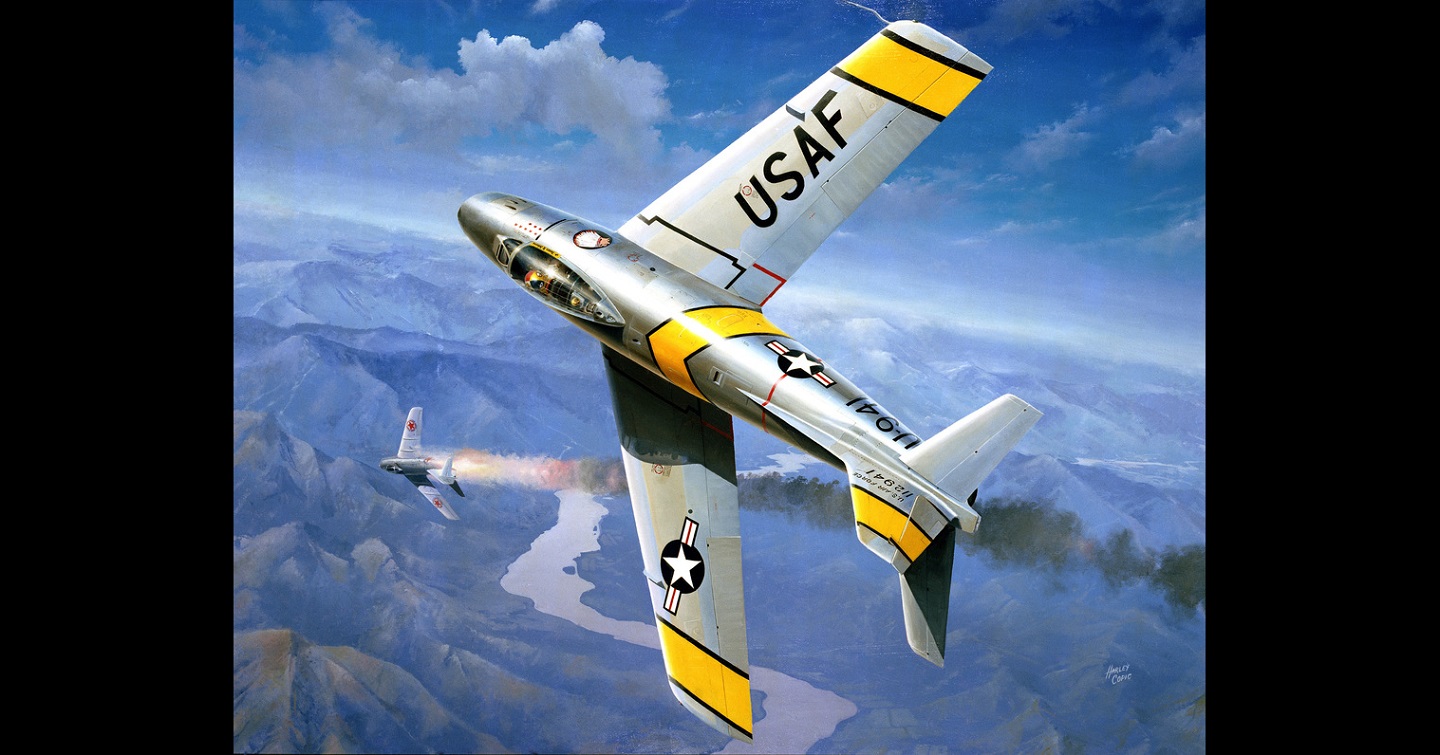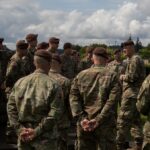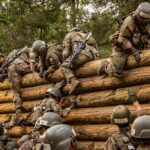
Within a year, Soviet MiGs drove B-29 and B-26 bombers of the U.S. Far East Air Forces out of the daytime skies.
I am always uneasy with planning based on wargaming results without combat experience to validate them. Early in the millennium, I was a witness to an Army exercise at the Center for Strategic Leadership at Carlisle Barracks, designed to justify the course of Army Transformation. The scenario created a complex crisis with American forces in great peril, but then new Future Combat Systems (FCS) arrived and saved the day. It was assumed to have all the capabilities touted by contractors and force managers who were developing the system, and the service was already changing its organizational structure and tactics to incorporate it. However, the capabilities demonstrated in that wargame never became reality, and the FCS program was cancelled in 2009. We cannot allow hype from defense contractors to become operational assumptions. Neither can we underestimate the technological capabilities of our potential adversaries.
In late October of 1950, rumors of mysterious swept-wing jet aircraft reached United Nations Command in Korea. On November 1st, the MiG-15s attacked UN aircraft across the Yalu River. Their Soviet pilots blinded aerial intelligence-gathering along the Chinese border with North Korea, facilitating the passage of Chinese Communist armies. They would soon force the longest retreat of an American Army in history, after a massive onslaught, later that month. Within a year, Soviet MiGs drove B-29 and B-26 bombers of the U.S. Far East Air Forces out of the daytime skies. Meanwhile, America scrambled to get F-86 Sabres, its only aircraft capable of combatting the new foe, into theater as it cranked up production and reclaimed the 60 it had sold to Canada.
The MiG-15s’ capabilities shocked American leaders and the U.S. Air Force (USAF). No one thought the Soviet Union and its allies had the knowledge and skills to build such jets. American technical intelligence had failed. Congressional hearings cited captured German scientists and imported British jet engines as possible explanations for the quick Soviet advances in aeronautical engineering, but the result remained that the rest of the air war over Korea would be radically different than what had been expected, entailing greater challenges and much higher costs.
We again have operational plans for aerial warfare based on sanguine assumptions about American technological superiority. Glowing praise for the F-35 emerges from wargames that predict it can destroy at least 20 enemy aircraft for every one of its losses, as it exploits its stealth and network capabilities.
Recent USAF complaints about the unnecessary redundancy of Army long-range fires tout the existing long ranges and low observability stealth aircraft provide, that will allow them to carry out such missions more cheaply and at low risk. It is worth noting that while much of the rest of the world plans to overwhelm air defense networks with swarms of missiles and drones, we still continue to have faith in our aircraft to penetrate such defenses mostly on their own.
What if such assumptions are wrong? Potential adversaries are not going to reveal all their capabilities in peacetime, though some have hinted that they have counters to our advantages. What happens if detection means can reduce the cloaking of stealth, or cyber counters can degrade networks? Are we prepared to slug out a war of attrition such as historian Cathal Nolan argues any peer-to-peer conflict always becomes?
According to their official history, in nine days of battle over the Dunkirk beachhead, the Royal Air Force lost at least 106 Hurricane and Spitfire air superiority fighters. We only have a few more F-22 Raptors in the whole USAF.
Obviously, technological surprise is not just restricted to the aerial realm. It comes in two forms, either with unexpected capabilities from adversaries, or with unpredicted failures of our own technology. In World War II, the U.S. Navy was caught unaware by the performance of the Japanese Long Lance torpedo, and by the deficiencies of the firing mechanisms of its own. Torpedo failures plagued the U.S. service well into 1943. The Marines paid a heavy price at Tarawa for inadequacies in Higgins Boats and naval shore bombardments, and had to procure more Amtracs and change tactics. The U.S. Army was unprepared for deadly German 88-millimeter guns. American tanks like the Stuart and Lee and early antitank guns were sadly deficient in combat against the best German armored vehicles. Again, it took time to field adequate replacements.
More so than the other services, the Air Force tends to go into every war with something new to employ that is fundamental to its warfighting concept.
How does one prepare for technological surprise? The first step is just to acknowledge that it will happen. The USAF has been very vulnerable to it because of the Service’s heavy reliance on new and rapidly changing technology, along with the need to predict its capabilities without combat experience. More so than the other services, the Air Force tends to go into every war with something new to employ that is fundamental to its warfighting concept. In World War II, assumptions that the new bombers could achieve decisive results with acceptable losses without fighter-cover proved wrong. The Korean experience discussed above forced the service to relearn how to perform neglected tactical missions such as close air support and escort duties. Many adjustments were required in Vietnam to adapt to conditions there, including to the unexpected sophistication of enemy air defenses. Even in contemporary experiences such as Kosovo, Serbian passive air defense capabilities were a surprise.
Generally, the USAF has been very adept at making necessary changes, but they always take time and resources, and cost early blood and treasure. A readiness for technological surprise will require the service to retain a robust capacity to suppress enemy air defenses and to continue to emphasize traditional air-to-air dogfighting capabilities.
One buffer is having redundant capabilities. Army long range fires are a fine hedge if enemy counterair capabilities prove surprisingly effective, or stealth is less so. Maintaining air superiority in the current environment of complex multi-domain operations will be challenging. Budget cutters are always looking for dollars to save by eliminating redundancies to be more efficient, but effectiveness is much more important for the American military. General Eric Shinseki often explained that we do not want to win wars by a close score of 51-49; instead, we desire a 100-0 shutout that is over quickly, with minimum bloodshed.
Services must also be prepared to develop systemic responses to such surprise. It is never enough just to introduce some newer technology; changes in doctrine, training, tactics, and organization may be required as well. And the cooperation of other government agencies and private industry might also be important, depending upon the sophistication of required technological innovations. The contemporary information environment, including cyberspace, provides potential adversaries many new avenues for unexpected mischief, and most American capabilities in that realm exist outside of the Department of Defense.
Perhaps most important, we must avoid hubris about our own capabilities that magnifies the impact of technological surprise. During the Cold War, we Americans tended to envision our Soviet enemy as ‘ten feet tall.’ We built a strong defense establishment to defeat an adversary who eventually proved much less capable than we thought. For Operation DESERT STORM, we massed a large force to deal with a presumed experienced and battle-hardened Iraqi army, from its long war with Iran. After our overwhelming victory, we now see ourselves as ten feet tall, with unmatched technology and professional military forces, and a hubris that has cost us in more recent and persistent conflicts. We are returning to the atmosphere that existed at the beginning of the Korean War, when we did not believe that our enemies could replicate our technology, and we expected the appearance of American ground troops to easily intimidate and outmatch their North Korean opponents.
I have often been quoted for emphasizing that there are two kinds of warfare, asymmetric and stupid. Our most dangerous potential adversaries today are not stupid. They will be diligently trying to counter our advantages in combat while creating their own. Rather than believing our own or others’ hype about what we can do, we must expect the unexpected in future war.
Con Crane is a military historian with the Army Heritage and Education Center who is transitioning to the Strategic Studies Institute.
The views expressed in this article are those of the author and do not necessarily reflect those of the U.S. Army War College, the U.S. Army, or the Department of Defense.
Image Description: Sabre Dance
Artist: Harley Copic via The U.S. National Archives





From the second-to-last paragraph of our article above:
“We are returning to the atmosphere that existed at the beginning of the Korean War, when we did not believe that our enemies could replicate our technology, and we expected the appearance of American ground troops to easily intimidate and outmatch their North Korean opponents.”
I am not sure I would say that this is our current mindset.
Given the results of our efforts in Iraq, Afghanistan and elsewhere — and GEN Milley’s “Sputnik Moment” comment relating to China’s recent hypersonic weapons test — I would say that we are (or should be) now both properly and appropriately worried and concerned.
Add to this the fact that America now seems to have no powerful motivating goal before it today — for example, such as (a) containing communism in the Old Cold War and/or (b) advancing market-democracy in the post-Cold War — then I would say that we indeed have significant reason to be so worried and concerned.
Last but not least, our faith in both our Democratic and Republican parties, who both since the 1980s pushed for — both here at home and there abroad — wrenching political, economic, social and/or value change (so that the states and societies of the world, to include our own, might be made to better interact with, better provide for and better benefit from such things as capitalism, globalization and the global economy), THIS, also, has taken a heavy toll.
All in all, I would say that, today, we are at — if not THE — then certainly ONE OF THE — most unconfident times in our history.
This contribution by Con Crane a clinical example of how history and its practitioners can better inform policy and decision-making. History does not “repeat itself” nor “does it rhyme”. Studying it, however, can provide perspective and humility, or at least it should.
I just read “For the Alert Force..Klaxon, klaxon…”. A nuclear war fiction book only a nuke war geek would love. Written by ex-SAC guy – read as the RUS do a surprise nuke attack here and one squadron of B52s gets enough tactical warning to barely get off and gets their go codes just in time to be
disappointed as the RUS know where their penetration routes are and ….well you gotta read the book.